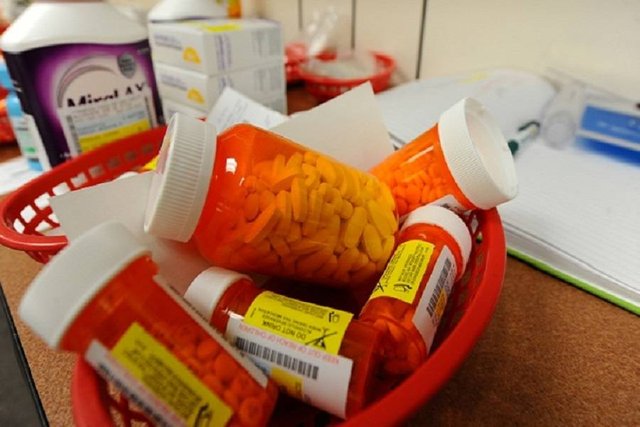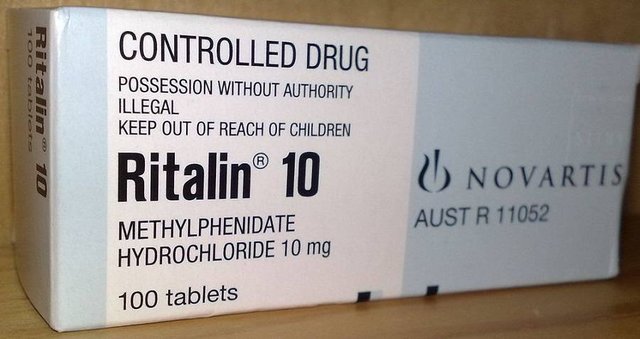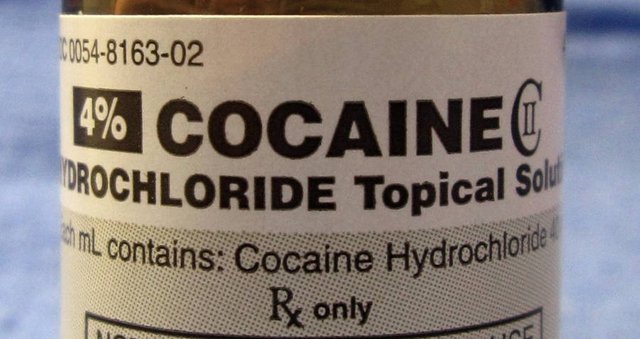Dangerous Street Drugs That Your Doctor Can Totally Prescribe Right Now

For about a century, the United States has been fighting a war on drugs that has all but consumed law enforcement. Today, federal and state governments annually spend approximately $51 billion on interdicting, tracking, seeking out, seizing, destroying, and prosecuting people for possession of drugs.
For all that money and effort, however, the rates of most drugs’ use among Americans has remained generally high and stable for generations. Whatever harm illegal drugs do, it’s clear that the lion’s share of expense and destroyed lives is actually related to the millions of people getting locked up and/or killed over these controlled substances.
It surprises most people to learn, for example, that marijuana is a Schedule I controlled substance and is therefore a drug that, in the DEA’s “Reefer Madness” opinion, is too dangerous even for doctors to prescribe to hospice patients in their last days of life.
The obvious silliness of this opinion has lately moved 29 states to adopt measures legalizing marijuana for medical purposes, though dispensaries that fill prescriptions still run a terrible risk of being raided, and many of them can’t get financial services out of banks’ justified fears that the government might seize their assets. In other words, the war on weed continues, and Washington remains convinced that any little bit of marijuana is too dangerous to keep in a locked pharmacy.
The United States is a signatory to the U.N.’s 1961 Single Convention on Narcotic Drugs treaty, which requires marijuana to be listed as at least a Schedule II (dangerous, but with some medical uses) controlled substance. Adherence to this treaty therefore requires the same government that owns more than 4,000 nuclear weapons to treat marijuana like it’s a live smallpox culture.
Meanwhile, many drugs that rational people consider to be way more dangerous than marijuana managed to slip through the cracks and are now being freely prescribed by medical personnel with hardly a blip on law enforcement’s radar. These drugs, which are absolutely legal to prescribe in every state, include:
Opioids, Even Medical Heroin, Are All Over The Place.

Opiates have been getting a little bit of press lately, as a soul-crushing epidemic of abuse sweeps the nation and destroys millions of innocent people’s lives. In 2015, opioids killed more than 30,000 people via overdose alone.
That’s nearly half of the U.S. overdose deaths for all drugs combined, and it’s nearly five times the amount of Americans that die from HIV and AIDS. The American Society of Addiction Medicine states that more than 2.5 million people are currently addicted to some kind of opioid and that four-fifths of new heroin users started out using legal opioids.

This fact isn’t surprising, or at least it shouldn’t be. When opioids first started appearing in Western medicine, they were miracle drugs. Drugs like medical heroin relieve pain without the deadly toxicity and grievous side effects of alcohol and other pain relievers.
Instead, medical heroin, opium, codeine, and all the other myriad drugs in this class just quietly go to work on the brain’s neurotransmitter receptors, blocking pain signals and bringing relief to patients. Apart from overdose, the only real risk that many of these drugs like medical heroin present is that of dependency, so it’s tragic that well-meaning doctors have probably been over-prescribing them for decades. Even medical heroin is sometimes prescribed for cancer patients and people undergoing surgery. Of course, it isn’t called heroin — that would be really embarrassing — but the active ingredient in “diamorphine” is atom-for-atom identical to the stuff that we know as heroin.
Meth: Great For Kids! Says The FDA

The first water-soluble methamphetamine was synthesized by Japanese chemists in 1919, and when it first hit the market, it seemed like a wonder drug. All through the 1930s, German pharmaceutical manufacturers were churning out the drug under the name Pervitin in order to keep soldiers wide awake and hyper aggressive during long training rotations. By 1940, however, even the German army was getting a little nervous as soldiers high on speed were shooting prisoners and sometimes assaulting their own officers when they were told to back down.
Meanwhile, the Soviet Army, which used a cheaper form of the drug called Vint, noticed something similar among their men. It is a sobering thought to imagine 600,000 fighting men on both sides at the Battle of Stalingrad, hunkered down in the snow, all of them high on methamphetamines and eager to kill each other with whatever weapons were on hand.
Ritalin, the go-to drug for unruly first-grade boys, is administered in tablet form and undergoes an elaborate breakdown process in the human body. Eventually, it converts into Dextroamphetamine, the active ingredient in meth.
Today, around 5 million Americans have filled at least one prescription for Ritalin or Adderall, with maybe five percent of children being diagnosed with ADHD. These numbers are way up from where they were 20 years ago, and with aggressive marketing pushes by drug companies — with some ads featuring celebrities like Adam Levine — prescription meth is finding more and more off-label uses, such as suppressing appetite and “increasing alertness.”
To be clear, the family of drugs that includes Ritalin, Adderall, and Vyvanse metabolizes into the same stuff that authorities started the “Faces of Meth” campaign to discourage the use of — and any licensed doctor in America can prescribe it to children for fidgeting in their seats.
Cocaine

YEES, cocaine is legal too. Technically, cocaine is a Schedule II drug – apparently less dangerous and addictive than marijuana, remember, according to the law — and is frequently used as a topical anesthetic during outpatient procedures.
Cocaine HCl is usually administered as a liquid, often soaked into gauze or poured directly onto the site to be anesthetized, and works to numb the mucous membranes before minor surgery, stitches, or a biopsy. One advantage that cocaine has as a topical analgesic is that it also tends to narrow blood vessels at the site where it’s applied, which can significantly reduce bleeding when cleaning out a wound or shaving down a deviated septum, among other uses.